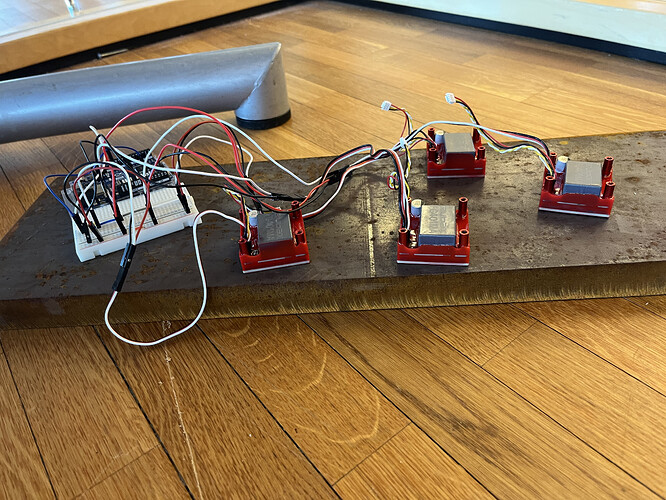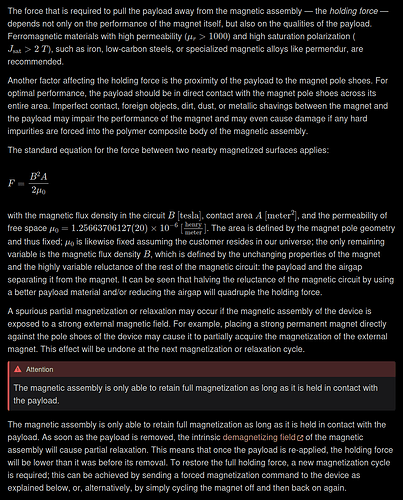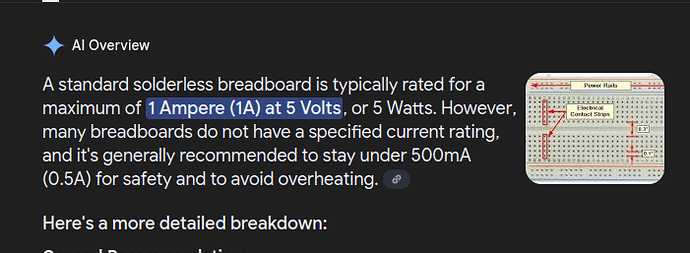Hi! I am working on a project where I am utilising the FluxGrip magnets to create pulling force to a ferromagnetic surface (black steel). When activating the magnetization command the magnets will magnetize for a short period of time before demagnetizing by itself. I believe this has something to do with the ferromagnetic surface, because when magnetizing with a small air gap between the magnet and the surface it works perfectly fine. What can be the cause of this, and is this behaviour known? In addition to this I experience a brutal decrease in magnetic pulling force, just by having an air gap of 1-2mm. Does anyone have any experience with this?
Hi!
The magnetic field of FluxGrip is optimized for applications like payload attachment in drones and robotics, this means that even a small air gap will significantly decrease the resulting force.
This section from fluxgrip.zubax.com is relevant here:
In order to achieve maximum pulling force at a larger distance a different pole arrangement is required, we can develop this. Please reach out to sales@zubax.com if you’re interested to discuss this further.
When activating the magnetization command the magnets will magnetize for a short period of time before demagnetizing by itself. I believe this has something to do with the ferromagnetic surface, because when magnetizing with a small air gap between the magnet and the surface it works perfectly fine.
This is very strange. The ferromagnetic surface shouldn’t affect the magnetization state, are you sure the magnet completed its magnetization cycle? (I’m assuming the surface isn’t magnetized.)
Looking at the photo I don’t see a power source, therefore I suspect this might be a power issue. The Arduino won’t be able to supply enough power for the FluxGrip to magnetize (and there’s a high likelihood that you will damage the power circuitry on the Arduino if you do this).
If you haven’t, please check the RCPWM section in the Quickstart guide, I think this might help you with your setup.
Thank you for your answers! The photo I provided was just an example to illustrate the ferromagnetic object I am trying to connect to. I am using a DC Lab power supply that was not connected at the time. The behaviour is very weird, because the only time the magnetization fails is when the magnets are directly connected to the surface. When held at a very short distance or placed just beside the object, the magnetization state initializes just fine. Can there be a problem where the ferromagnetic object induces a voltage or eddy current that demagnetizes the magnets?
I have now experimented further with a multiple magnet setup, and it seems that it is the magnets that interfere with each other and that their orientation has an impact. Through my tests there has been variable results using the magnets together in a four magnet setup. Sometimes they all magnetize, other times only one or two of the magnets will magnetize. I do not know what causes this behaviour. When testing with one magnet I works flawlessly.
I think this could be a power issue.
Looking at the photo it seems like the magnets are all connected to the same PWM signal. So perhaps the breadboard itself is not able to conduct the necessary current to provide all four magnets with the necessary power to magnetize simultanously?
From fluxgrip.zubax.com:
So 4 magnets switching simultanously would require at least 4A, which the breadboard would not be able to power.
(I’m assuming that the power source is able to provide 4A.)
The power source is able to provide 4A. I have now tried to use terminal blocks to connect the system together. I have also tried to control the magnets using four individual PWM pins, but the problem is still apparent. Can the magnetic fields or electric noise create problems?




